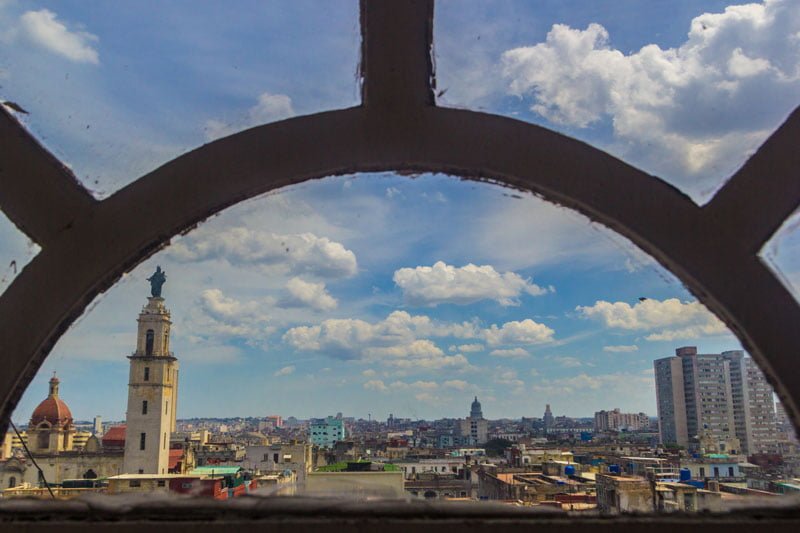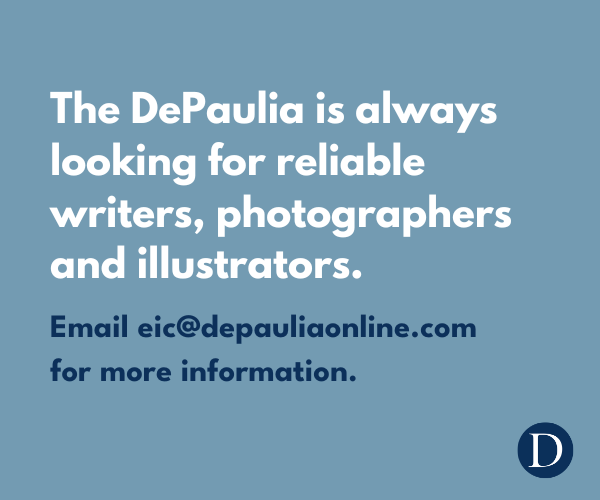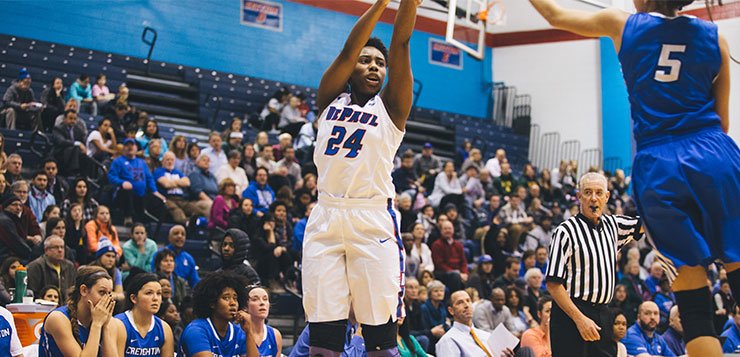
While President Obama flew into Cuba on Air Force One on his historic trip, a group of DePaul law students watched from their seats on a nearby Havana beach while sipping mojitos.
Over spring break, DePaul offered law students their first study abroad program in Cuba, which gave them the opportunity to study the legal system of Cuba as trade regulations between the U.S. and Cuba loosen. The trip, which took place from March 19-27, also coincided with the president’s trip to Cuba on March 20.
The trip was put together by DePaul law professors Alberto Coll and Cary Martin. Coll, a Cuban native, spent two and half years planning the program and working with the American Bar Association to receive approval.
“We are one of a few law schools that have this program,” Coll said. “DePaul has a wonderful Cuba program for undergraduates with professor Felix Masud, and this was the first for the Law School.”
They were able to schedule the study abroad trip by adhering to at least two of the 12 pre-approved guidelines for visiting Cuba. DePaul students studied Cuban law and culture at the University of Havana and participated in person-to-person exchange, which is essentially integrating with the locals and preparing a schedule of educational activities outside of an established educational institution. Traveling to Cuba just for the sake of tourism is illegal.
“I love the United States and I love Cuba,” Coll said. “I’m very committed to seeing our two countries grow closer. I want to see the people of the United States and Cuba working closer together, and this is just one expression of that commitment I have. I’ve developed a relationship with the dean of the Law School at the University of Havana, and finally they were very happy to let us do this program.”
The focus of the program was to teach DePaul students the Cuban legal system, which would give the students the knowledge to help American companies interested in investing in a Cuban company. Students spent about four to five hours a day in a classroom learning a different unit over the course of their visit. Professors from the University of Havana lectured on a myriad of topics, covering Cuban law and culture while Coll translated.
“They have to get a license from the U.S. Treasury Department in order to be allowed to do business with Cuba,” Coll said. “Yet they also have to deal with Cuban law, and that means they have to get permission from (and) . . . navigate the Cuban bureaucracy and the Cuban legal system to accomplish that.”
Students involved in the study abroad program faced difficulties finding a way to get to Cuba and some used AirBnB to find lodging for the week-long program. It was up to each student to find a way to Cuba. Several students traveled to Miami and took a charter flight to Havana from there. However, if the plane wasn’t full, the remaining passengers on the flight had to pay for the extra seats on the plane. Others flew in from other countries.
“I had to fly to Toronto, spend a few hours there, recheck in there with a completely separate booking and fly to Mexico City to Havana,” Julian Hayda, a graduate student who attended the study abroad program, said. “That was the only way I could book ahead of time with my credit card. If I were to fly from Chicago to Mexico City to Havana the airline wouldn’t be sanctioned.”
Students on the study abroad trip also witnessed the first visit by a U.S. president in 88 years from the Cuban perspective.
“Day one, one of the professors from the University of Havana, said ‘Cuba is a land of contradictions,’” Hayda said. “So you have a lot of anti-American sentiment and resentment from the embargo, which the Cubans refer to as the ‘blockade,’ but at the same time you have a lot of cultural identification with the U.S.’”
The contradictions in Cuban culture were easy to spot for Hayda after witnessing a sensational billboard that read “the blockade is the greatest genocide in mankind,” yet saw another depicting Raúl Castro and Obama face-to-face with text reading, “welcome President Obama.” He also recalls silence washing over the Cuban people while they stood during the Star Spangled Banner before the Tampa Bay Rays played the Cuban national baseball team.
“(It’s interesting) to observe that kind of respect for a country they’ve been told their entire lives has created destructive policies, and they kind of grew up in an environment where all the propaganda has made them hold an anti-U.S. sentiment,” Hayda said. “(They) had this deeply rooted nostalgia and respect for the United States.”
Although trade with Cuba has been very limited over the past 50 years, American products that entered the country before the embargo are still widely used by Cuban citizens and are kept in working condition with custom parts.
“(The Cuban people) are incredibly resourceful and are full of ingenuity. Here in the U.S. when something breaks we just throw it away and buy a new one,” law student Tara Goodarzi said. “They also function very well without any new cars or hardly any Internet services.”
Classic American cars are still used for transportation in Havana. The Cuban citizens refer to them as “almendrones.” The name is a reference to the cars’ resemblance to an almond. Because of the shortage of vehicles in Cuba, many of the owners of these vintage cars operate as impromptu taxis, much like a Cuban Uber.
“I went to church on Easter Sunday in a baby-blue Cadillac. They’re all taxis. Very people own cars, so you can flag down anyone who owns a car and they’re a taxi,” Hayda said. “You’re sitting on these old seats and the speedometer is all vintage and it’s made of stainless steel.”
Students were encouraged to share experiences and explore cultural differences. They lived among the people, bought food from supermarkets and attended events with their neighbors.
Goodarzi said her favorite experience was “definitely speaking with some Cuban baseball fans in Old Havana. Everyone was dancing, laughing, taking in a square on the Prado,” Goodarzi said. “It was great to just be an observer and watch all the people, young and old, enjoying Cuban music and the various baseball debates.”
The students only have had nice things to say about their first experience in Cuba, self-proclaimed “land of contradictions” by its own citizens.
“I recommend for everybody to go to Cuba,” Hayda said. “They’re our closest neighbor, and it’s a whole different world.”



